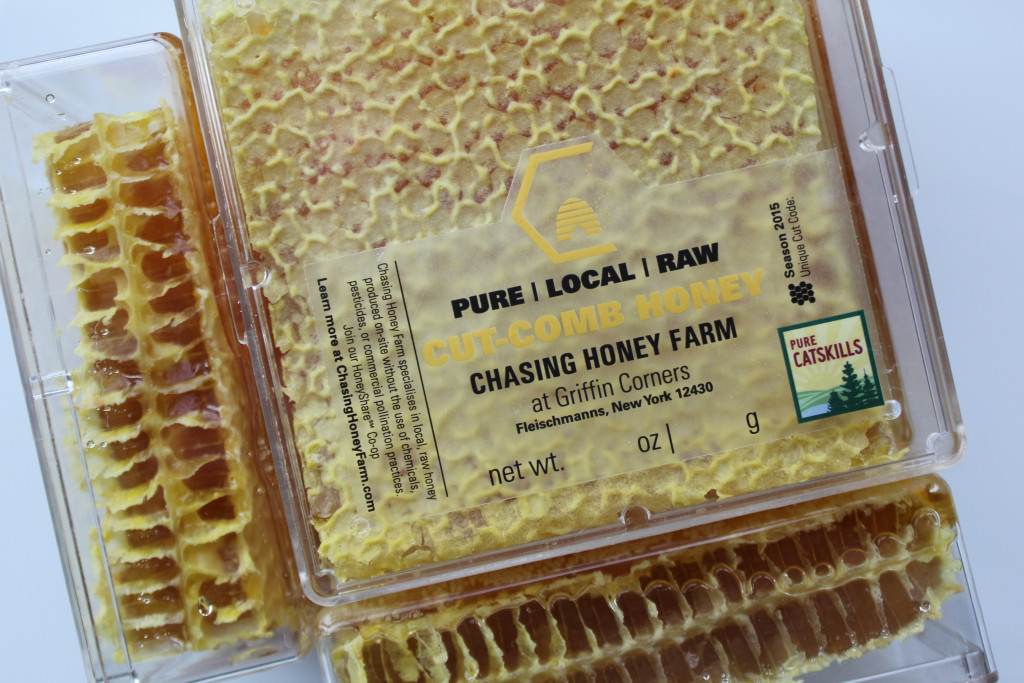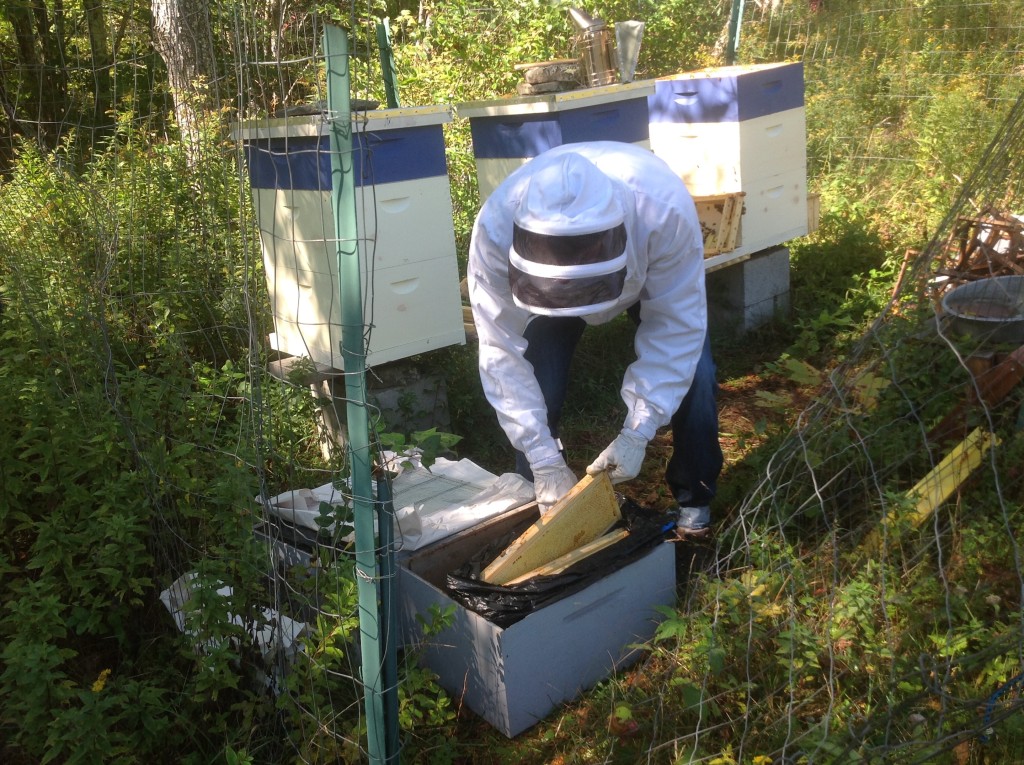The three pesticide-free beehives that were installed last May on Chasing Honey Farms natural apiary in Fleischmanns have survived the winter. Moreover, the bees have been collecting pollen for the last two weeks. When it was 80F in the middle of March, all three hives were active.
Proprietor Chase Kruppo had to start his beehives from scratch again a year ago because the bees he had installed the previous year had died over the winter. Once the new bees were installed in their hives on May 2nd last year, they were left to their own devices with wax foundations in the hives.
Chase is opposed to doing any artificial feeding of established colonies, but to start them last year, he said they definitely need a little boost. They arrived before the blossom, so they got one serving of sugar water for a week or two, in a one gallon bucket via the drip method. Chase noticed that the bees had stopped using the sugar water a week or two after going in the hive so he removed it. The carniolan bees had already surprised him with their industriousness, because they had formed a patty of wax comb inside the box in which they were transported.
The bees had produced honey by mid-to-late June of last year, after building out the comb, filling it with nectar and then dehydrating that nectar into honey, which they do by beating their wings. Chase didn’t touch the honey, but added another brood box that the bees filled in a week. (Find our detailed first report of the hives here.)
So – cut to the present day and the bees have done very well in the year since they were established and are thriving after a relatively mild winter here in the Catskills. Chase did not give the bees any sugar water again last year or before winter because he didn’t want them to have false sense of security. He wanted them to be tough enough to survive anything. Supplementing their diet gives the bees the idea that environmental conditions are better than they really are. In nature, as the weather gets cooler going into winter, the queen stops laying to shrink the population, leaving more honey to feed a smaller population over the winter, thus ensuring the best chance of survival of the hive. Once the air temperature drops below 55F, the bees’ muscles seize up and they physically can’t fly to get pollen.
Chase left about 60lbs of honey per hive for the bees to eat over the winter and survive they did. This is especially surprising considering the bees were non-native bees having been imported from California. They were bred for hygiene and certified parasite and disease-free. “They had papers,” said Chase of the bees that are treated like a commodity in the agricultural market. “But we don’t treat them like cattle. We treat them like the queens and princesses that they actually are”.
Another natural beekeeping practice that doesn’t happen in commercial beekeeping industry is the natural replacement of the queen by the bees. Commercial beekeepers will kill the queen and replace her with a freshly mated queen so that going into winter they have a strong, virile queen. Natural beekeepers allow the bees to replace their own queen when her pheromones diminish as she ages. The bees sense that their queen is weakening and they build queen cups and raise queen larvae and whichever queen emerges first goes to the other queen cups and kills them. “It’s a death match between the queens,” says Chase. There have been cases where the aging, dying queen that might live for another few months lives side by side with the new queen. The hive is listening to the new queen, but the old dowager queen remains in the hive.
So what’s next for Chasing Honey Farms? Chase would like to introduce experimental hives, like top-bar hives and different ways of producing honey through the Langstroth model, which is the conventional model that’s been used for years: a hive with removable frames. Prior to the Langstroth model, honey harvesting was devastating to the hives. Bees were kept in the classic dome shaped hives made of mud and thatch that the beekeeper had to break in order to remove the honey, even smoking and burning the bees out of the hive.
In the next month or so, Chase will start working with Spillian in Fleischmanns to start a new garden hive on their property and will manage it for them. The goal is for them to have their own source of honey for use in their kitchen.
Chase has had requests for liquid honey, which he will look into producing this year for customers who find comb honey messy. Liquid honey is honey that was been extracted from the comb, which he says is an expensive process and creates waste. “A lot of honey goes down the garbage chute with the wax cappings if you don’t save them” say Chase.
He also may produce some section comb, which is honey that is uncut, perfectly capped and sealed. Chase is thinking about starting dedicated hives for honey in the aforementioned forms for members of his honey CSA should enough people request them
He is also looking into farm services, establishing permanent hives on site on organic, sustainable agricultural ventures to improve the pollination of their crops without moving the bees. “The honey that’s produced can be sold under the farm’s brand or under our distribution retail network,” he says.
Comb honey from Chasing Honey Farms at Griffin Corners is sold at Stick in the Mud in Margaretville and Green Toad Bookstore in Oneonta.


this is just plain wonderful!
cant wait to try some super local honey!
Very interesting.